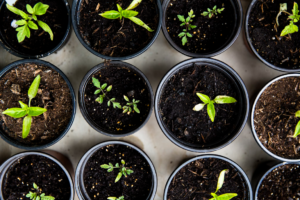
We’ve all experienced the sheer disappointment of watching a plant you’ve lovingly cared for wither away to nothingness. Sometimes, keeping a plant alive can feel near impossible, especially outdoors in your garden.
Learning about the weather and how it impacts different plants can be exceptionally helpful here. While plants are obviously a part of nature, this doesn’t mean they’re invulnerable to the elements!
It’s your job as a plant parent to understand each species’ needs and protect them from harsh conditions. Here are some useful tips to consider.
Choose the Right Coverings
By now, we all know that using an SPF on our faces every day is essential to protecting our skin from the sun’s harsh UV rays. Believe it or not, your plants need some of that protection, too!
While light is important for healthy plants, sometimes that direct sun can be too much, and this is where a greenhouse and proper coverings are important. UV resistant polycarbonate sheets are a great option for a DIY greenhouse, as they allow all the light in while protecting fragile plants from the harshness of the sun.
Mulching Techniques
Using mulch is another easy way to protect your plants, this time focusing on the soil they’re planted in. Soil needs to be moist and warm for a plant to thrive, and harsh, dry winters can sometimes jeopardize this.
Mulch is a thick layer of materials such as leaf mold, manure, compost, or even rocks and gravel. It conserves soil moisture by minimizing how much water evaporates on sunny and windy days. It also helps prevent cold, dry soil from cracking and damaging plants’ roots.
Windbreaks and Hedging
Sometimes, we use screens or hedges for an added bit of privacy from nosy neighbors. However, these can also serve a more practical function as windbreaks for more fragile and vulnerable plants that might be damaged by strong winds.
Dense hedging plants like Alder, Beech, and Yew can provide protection by creating shelter and a barrier from the wind in your garden. Hedges are not only great for protecting the rest of your plants, but they can look stunning, too, and will add beautiful dimension to your garden.
Seasonal Protection
Some plants just don’t do very well in certain seasons, such as very harsh winters, but that doesn’t mean you can’t have them in your garden! Frost can give your plants a nasty bite, and covering them up when it’s extra chilly can protect them so they bloom happily again in the warmer months.
This can be done with simple sheets or any light, woven fabric. You could use anything suitable you find in your home or purchase plant covers from your local nursery. Avoid using plastic sheets (these aren’t very breathable) unless you’re facing heavy snow.
Water Management
Watering your plants is one of the simplest parts of caring for them. However, sometimes it’s not as simple as we think!
A proper watering schedule is important and will differ for each plant. Overwatering and underwatering can lead to seriously unhappy greenery, and you’ll need to find the right balance based on rain patterns, climate, how much sun you get, and other factors. You also need to consider drainage and how to optimize your soil moisture levels to prevent waterlogging and other hydration-related challenges.
Monitoring and Maintenance
Having a beautiful and flourishing garden requires constant upkeep. You’ll need to monitor your plants regularly and perform various maintenance tasks, such as trimming, pruning, pulling weeds, and managing pests.
Coming up with a gardening schedule will help you stay on track. Try to spend some dedicated time in your garden at least once a week, and determine how often different plants require your attention so you can build that time into your weekly routine. Consistent care will help prevent problems from developing due to negligence and a lack of awareness.
Final Thoughts
Even for long-time gardeners, there is always more to learn about creating the optimal environment for your plants. Often, the conditions that help one plant to thrive will be the downfall of another, but there are ways to avoid disaster.
For each plant species in your garden, do a little research on its likes and dislikes. This will help you understand which weather conditions it might be sensitive to and allow you to take the proper measures to protect it from being damaged. From sunshine to rain, there is always a potential threat lurking around the corner!






